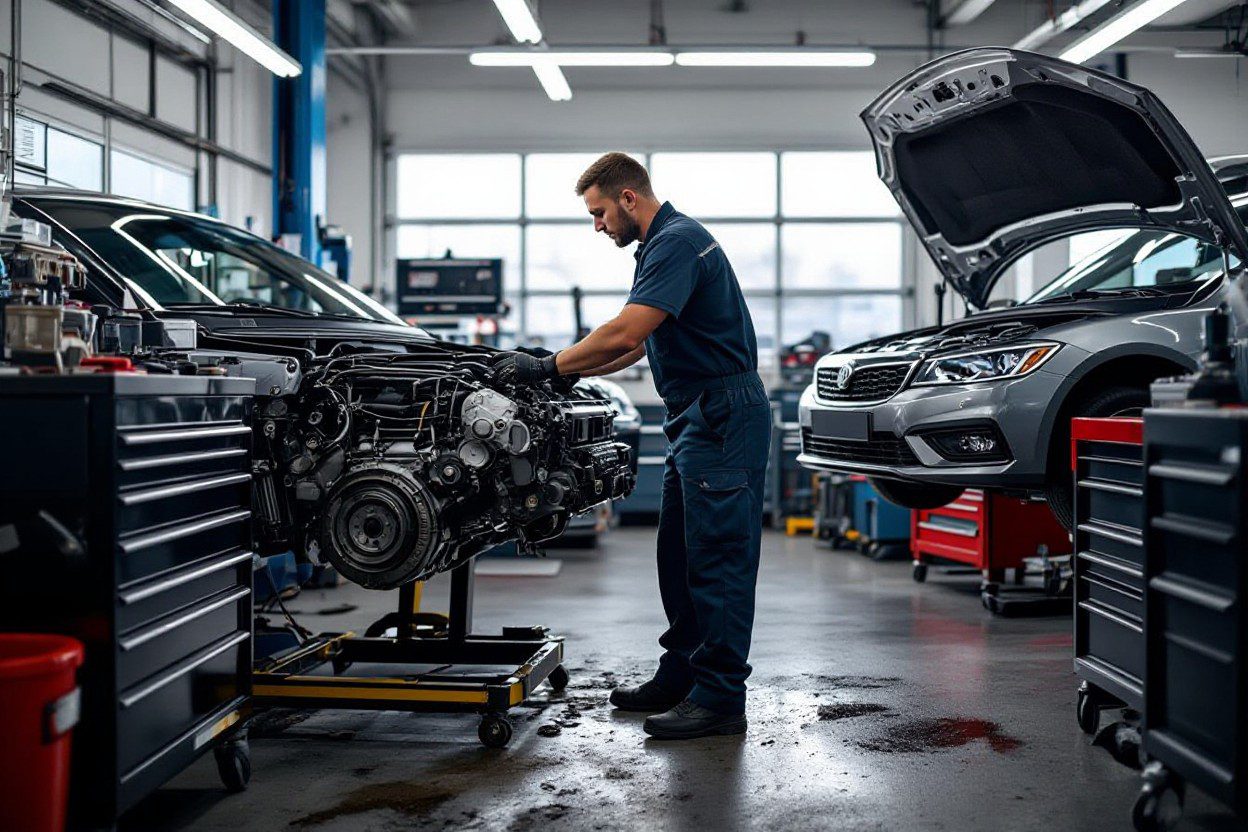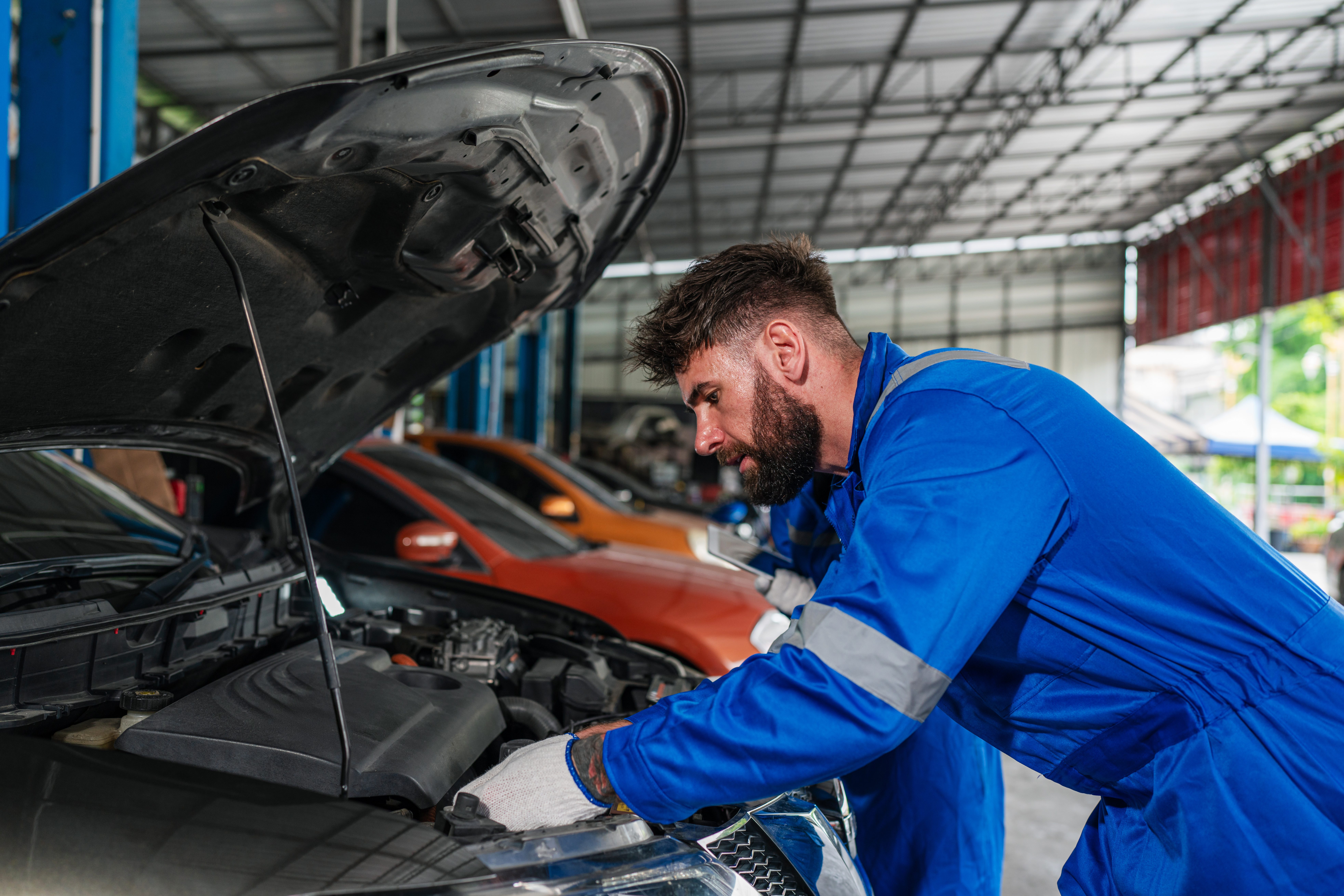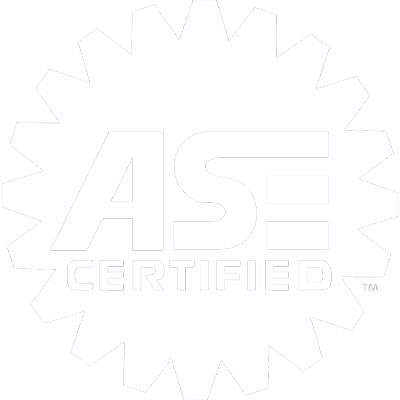Maintenance is imperative to ensure your vehicle runs smoothly and safely over time. At Aloha Auto Repair, we believe that understanding auto maintenance empowers you to protect your investment and avoid unexpected breakdowns. By regularly checking and servicing key components, you extend your car’s life and improve its performance. This guide will walk you through the important steps you can take to maintain your vehicle effectively and confidently.
Key Takeaways:
- Regular auto maintenance helps extend the lifespan of your vehicle and ensures optimal performance.
- Routine checks like oil changes, tire rotations, and brake inspections can prevent costly repairs down the road.
- Scheduling maintenance with trusted professionals at Aloha Auto Repair guarantees personalized and reliable service for your vehicle.

The Essential Checklist for Your Vehicle’s Longevity
Maintaining your vehicle requires a consistent approach to several key areas to keep it running efficiently. Regularly inspect your fluids, filters, brakes, belts, and hoses to prevent unexpected breakdowns. By routinely assessing battery health, spark plugs, and the cooling system, you can avoid performance issues and costly repairs. Setting scheduled appointments for professional diagnostics ensures early detection of potential problems, giving you peace of mind and extended vehicle life.
Engine Maintenance Essentials
Regular oil changes, typically every 3,000 to 7,500 miles depending on your vehicle and oil type, are foundational to your engine’s health. You’ll want to monitor your oil, coolant, and transmission fluids for proper levels and contamination. Inspection of air and fuel filters is key to preserving engine efficiency, while timely spark plug replacements—usually around 30,000 to 100,000 miles—help maintain smooth operation and fuel economy.
Tire Care: The Foundation of Safety
Proper tire maintenance impacts both safety and fuel efficiency. Check tire pressure monthly and ensure it matches manufacturer recommendations; underinflated tires reduce mileage and increase wear. A tread depth under 2/32 inch signals a need for replacement, as worn tires can compromise grip and braking. Rotating your tires every 5,000 to 8,000 miles promotes even wear and extends their life significantly.
Beyond inflation and tread inspections, examining your tires for uneven wear patterns can reveal issues with alignment or suspension that you may overlook. For example, cupping or scalloping indicates the need for a thorough suspension check. Additionally, seasonal tires require replacement or switching depending on climate; all-season tires may falter in snow, while winter tires provide enhanced traction. Utilizing a tire pressure monitoring system (TPMS) alerts you to sudden changes, helping maintain optimal tire performance between manual checks.
Uncovering the Myths: What You Can Skip and What You Can’t
Knowing which auto maintenance tasks you can delay and which demand immediate attention saves you time and money. For instance, skipping air filter replacement might not seem urgent, but ignoring brake inspections can compromise your safety. Certain services, like tire rotations, help even out wear and extend tire life, so dismissing them could lead to premature replacements. Balancing what to prioritize requires understanding how each component affects your vehicle’s performance and reliability.
The Truth About Oil Changes
Your vehicle’s engine depends on fresh oil to reduce friction and remove contaminants. Although some modern engines allow longer intervals between oil changes, delaying beyond 7,500 miles typically risks sludge buildup, which chokes engine efficiency. Synthetic oils often extend the time frame but don’t eliminate the need for regular changes altogether. Checking your oil level and quality monthly protects against costly repairs, ensuring your engine remains clean and well-lubricated.
Brake Inspection: More Than Just Squeaks
Brake noises aren’t the only signal your brakes need attention. Even if you don’t hear squeaks or grinding, brake pads naturally wear down about 1 millimeter every 5,000 miles, impacting stopping power. Fluid levels and rotor conditions also require routine checks to prevent failures. Ignoring subtle signs can lead to unsafe driving conditions, making brake inspections an imperative part of auto maintenance you shouldn’t bypass.
Beyond the obvious, brake inspections involve evaluating pad thickness, rotor wear, and hydraulic fluid condition. For example, uneven rotor grooves may cause vibrations during braking, indicating potential warping needing correction. Brake fluid, which attracts moisture over time, can degrade system responsiveness and cause corrosion in brake lines. Keeping up with these checks helps maintain reliable stopping distances and extends the lifespan of critical braking system components.
The Financial Benefits of Proactive Care
Staying ahead with regular auto maintenance can save you a significant amount over your vehicle’s lifespan. Catching small issues early prevents costly repairs and extends your car’s usability, reducing the chances of unexpected breakdowns and expensive replacements. Investing in timely oil changes, brake inspections, and fluid flushes not only enhances safety but also preserves your car’s resale value. By budgeting a bit monthly for proactive care, you avoid the financial shock of emergency fixes and keep your vehicle performing at its best without escalating costs.
How Regular Maintenance Prolongs Vehicle Life
Consistent upkeep like routine oil changes, tire rotations, and fluid checks ensures your engine and other critical components experience less wear and tear. Well-maintained vehicles typically last 20-30% longer than neglected ones, giving you more years on the road before needing a replacement. Preventing dirt buildup, corrosion, and lubrication problems reduces the risk of major mechanical failures. These small, scheduled tasks collectively preserve the structural integrity and efficiency of your car, making every mile more reliable and economical.
Estimating Long-Term Savings: A Cost-Benefit Analysis
Allocating around $300 to $500 annually for scheduled auto maintenance can help you dodge repairs costing thousands of dollars. For example, a $100 brake pad replacement today might save you from a $900 brake rotor overhaul down the line. Over a decade, spending $4,000 on upkeep often translates into $10,000 or more saved in major repairs and downtime. Factoring in fuel efficiency improvements from clean air filters and proper tire inflation, your ongoing maintenance investment continually pays dividends.
Diving deeper into the numbers, a study by AAA found that vehicles properly maintained added an average of 12,000 miles to their life expectancy and improved fuel economy by nearly 4%. With gas prices fluctuating around $3.50 per gallon, that efficiency can save you hundreds yearly, adding up when combined with avoided repair bills. Tracking your vehicle’s specific maintenance schedule through Aloha Auto Repair’s expert recommendations helps tailor your spending to maximize these benefits. This personalized approach ensures you’re not overspending while gaining the best value from your auto maintenance routine.

Innovative Tools and Technologies Transforming Auto Maintenance
You can now leverage cutting-edge tools that make auto maintenance more efficient and less daunting. Advances like real-time monitoring sensors allow for continuous checks on tire pressure and engine health, reducing unexpected breakdowns. Remote diagnostics combined with cloud-based data help mechanics access your vehicle’s performance history instantly, speeding up repairs. AI-driven predictive analytics forecast potential failures before they happen, guiding you to schedule timely maintenance. These technologies not only enhance precision but also cut down overall servicing costs, giving you more control and confidence in your vehicle’s upkeep.
The Role of Mobile Apps in Car Care
Mobile apps have streamlined auto maintenance by bringing vital car care information right to your fingertips. You can track service schedules, receive maintenance reminders, and even locate nearby repair shops with user reviews. Some apps sync directly with your vehicle’s systems, providing real-time diagnostics and fuel efficiency tips. They also store important documents like receipts and warranty details, all organized for quick access. This integration simplifies managing your vehicle’s health and helps you stay proactive without the hassle of manual record-keeping or guesswork.
Diagnostic Tools: Demystifying Dashboard Alerts
Dashboard warning lights often spark anxiety, but modern diagnostic tools can decode these alerts quickly and accurately. Handheld OBD-II scanners connect to your car’s computer system, providing detailed error codes and potential fixes. Many workshops and mobile apps now offer expanded diagnostics that translate these codes into understandable language, helping you decide whether immediate action is needed. By interpreting your dashboard’s signals properly, you avoid unnecessary trips and focus your attention on genuine issues.
Going beyond basic error codes, advanced diagnostic tools tap into extensive vehicle data streams, including sensor readings and engine performance metrics. For example, a misfire detected in a single cylinder comes with a specific code like P0301, pointing you and your technician directly to the faulty component. Some systems even allow wireless updates, ensuring compatibility with the latest vehicle models. You can pair these tools with expert guidance from Aloha Auto Repair’s technicians, combining technology and experience to resolve issues faster and maintain your car’s reliability.
Preparing Your Vehicle for Seasonal Changes
Adjusting your vehicle to seasonal shifts ensures consistent performance and reduces wear. For example, swapping to season-specific tires enhances traction—winter tires with softer rubber compounds grip icy roads better, while summer tires handle heat and dry pavement effectively. Fluid checks also matter; damping capacity of antifreeze and oil viscosity should match temperatures ahead. Battery health can wane in cold months, so testing cold-cranking amps before winter helps you avoid unexpected failures. Each change you make now can save you unexpected breakdowns and costly repairs when temperatures drop or soar.
Winterization: Protecting Your Car from the Cold
Switching to winter-grade oil such as 5W-30 improves engine start-up in frigid temperatures, and complementing this with a robust antifreeze mixture guards against freezing. Equipping your vehicle with snow or all-terrain tires increases grip on ice and snow. Checking your battery’s voltage and replacing old wipers with winter-specific blades ensures visibility. Sealing door and window gaskets with silicone spray prevents them from freezing shut. These targeted measures shield your vehicle against harsh conditions and keep you safely on the road during winter months.
Summer Prep: Keeping Cool During Hot Months
Maintaining your cooling system by flushing old coolant and inspecting the radiator hoses prevents overheating during extreme heat. Tire pressure should be checked regularly since heat causes expansion, increasing blowout risk. Using sunshades and protective wax can minimize interior damage and paint fading. Air conditioning service, including refrigerant recharging, keeps cabin temperatures comfortable. Being proactive with these steps ensures your vehicle runs reliably and your driving experience remains pleasant in hot weather.
Beyond basic cooling system maintenance, paying attention to your vehicle’s air conditioning compressor and condenser is vital. Over time, dust and debris can restrict airflow, reducing cooling efficiency, so periodic cleaning matters. Additionally, drive belts that power the AC system endure extra strain in summer—inspect them for cracks and wear to avoid sudden failure. Monitoring coolant temperature sensors can alert you early to overheating risks. Taking these extra precautions safeguards your engine’s cooling capacity and keeps your vehicle ready to face peak summer heat without compromise.
Final Words on Auto Maintenance
As a reminder, staying consistent with your auto maintenance ensures your vehicle runs smoothly and safely. By regularly checking and servicing your car, you protect your investment and avoid unexpected breakdowns. Trust Aloha Auto Repair to provide expert care tailored to your vehicle’s needs, helping you extend its lifespan and maintain peak performance. Prioritize your auto maintenance to enjoy peace of mind and a reliable driving experience every time you hit the road.
FAQ
Q: How often should I perform routine auto maintenance on my vehicle?
A: Routine auto maintenance intervals can vary depending on the make and model of your vehicle, but a good rule of thumb is to have a general check-up every 3,000 to 5,000 miles or every 3 to 6 months. This schedule typically includes oil changes, tire inspections, fluid level checks, and brake evaluations. For Aloha Auto Repair customers, consulting your vehicle’s owner’s manual and following tailored recommendations during service visits helps keep your car in optimal condition.
Q: What are the basic auto maintenance services offered by Aloha Auto Repair?
A: Aloha Auto Repair provides a comprehensive range of auto maintenance services, including oil and filter changes, tire rotations and balancing, brake inspections and repairs, battery testing and replacement, fluid top-offs, and engine diagnostics. These services are designed to extend your vehicle’s lifespan and ensure safety on the road.
Q: Why is tire maintenance important as part of my regular auto maintenance routine?
A: Tire maintenance is a key component of auto maintenance because properly inflated and balanced tires improve fuel efficiency, vehicle handling, and safety. Regular tire rotation and alignment checks at Aloha Auto Repair can prevent uneven wear, extend tire life, and reduce the risk of blowouts or accidents.
Q: Can I perform any auto maintenance tasks myself, or should I always visit a professional like Aloha Auto Repair?
A: While some basic tasks like checking tire pressure, topping off windshield washer fluid, or inspecting visible components can be done at home, many auto maintenance tasks require specialized tools and expertise. Professional services provided by Aloha Auto Repair ensure that inspections and repairs meet manufacturer standards, identify issues early, and maintain vehicle performance effectively.
Q: How can regular auto maintenance at Aloha Auto Repair help with the resale value of my vehicle?
A: Keeping up with recommended auto maintenance at Aloha Auto Repair maintains your vehicle’s performance and appearance, which positively impacts its resale value. A well-documented service history shows prospective buyers that the car has been cared for properly, providing confidence in its reliability and reducing concerns about potential costly repairs.
Also read:
How Premium Automotive Repairs Service Can Extend the Life of Your Car
Complete Automotive Repair – Keep Your Car Running Smoothly with Aloha Auto Repair
Reliable Automotive Diagnostics Near Me: 5 Must-Know Benefits with Aloha Auto Repair






